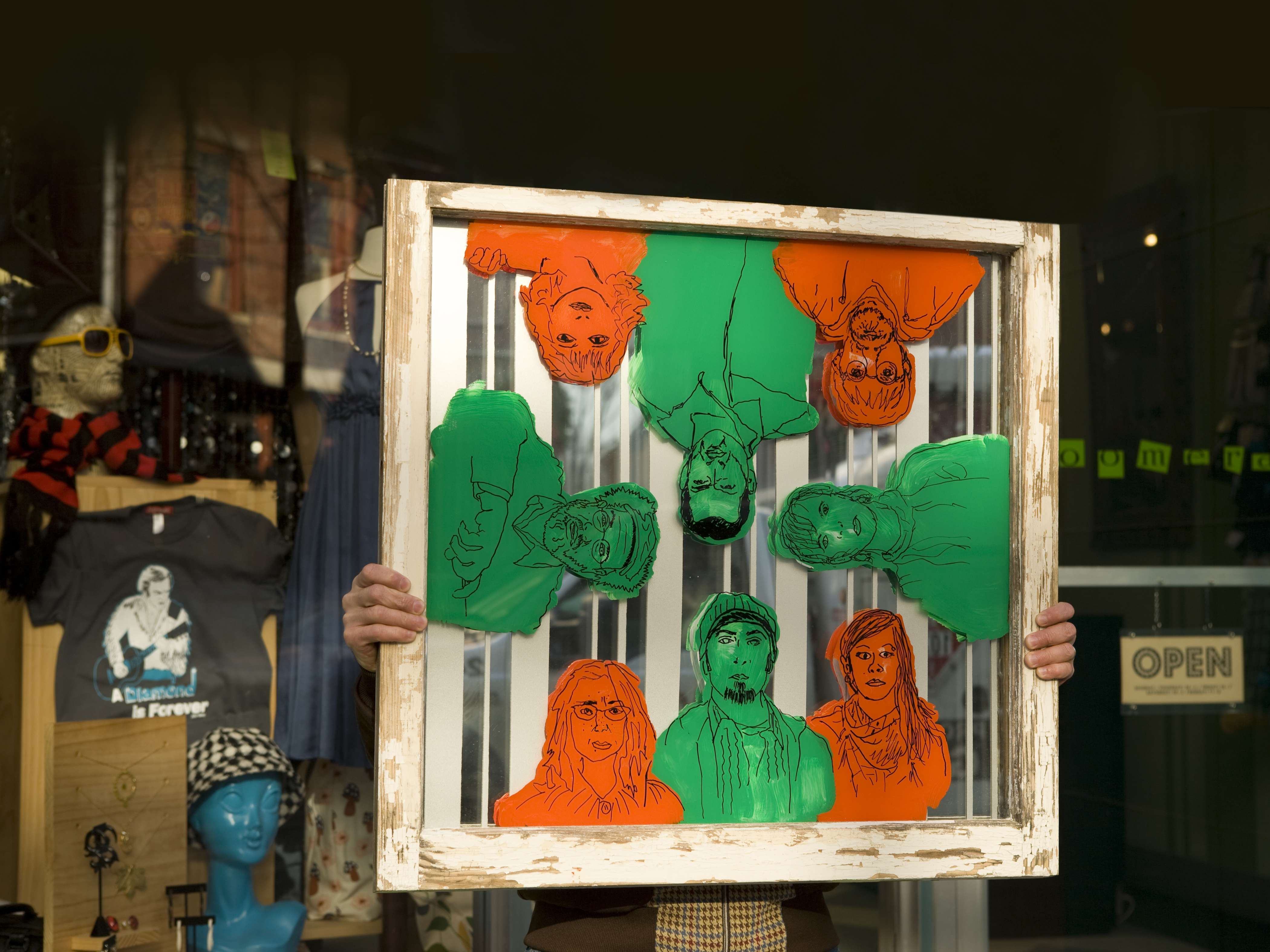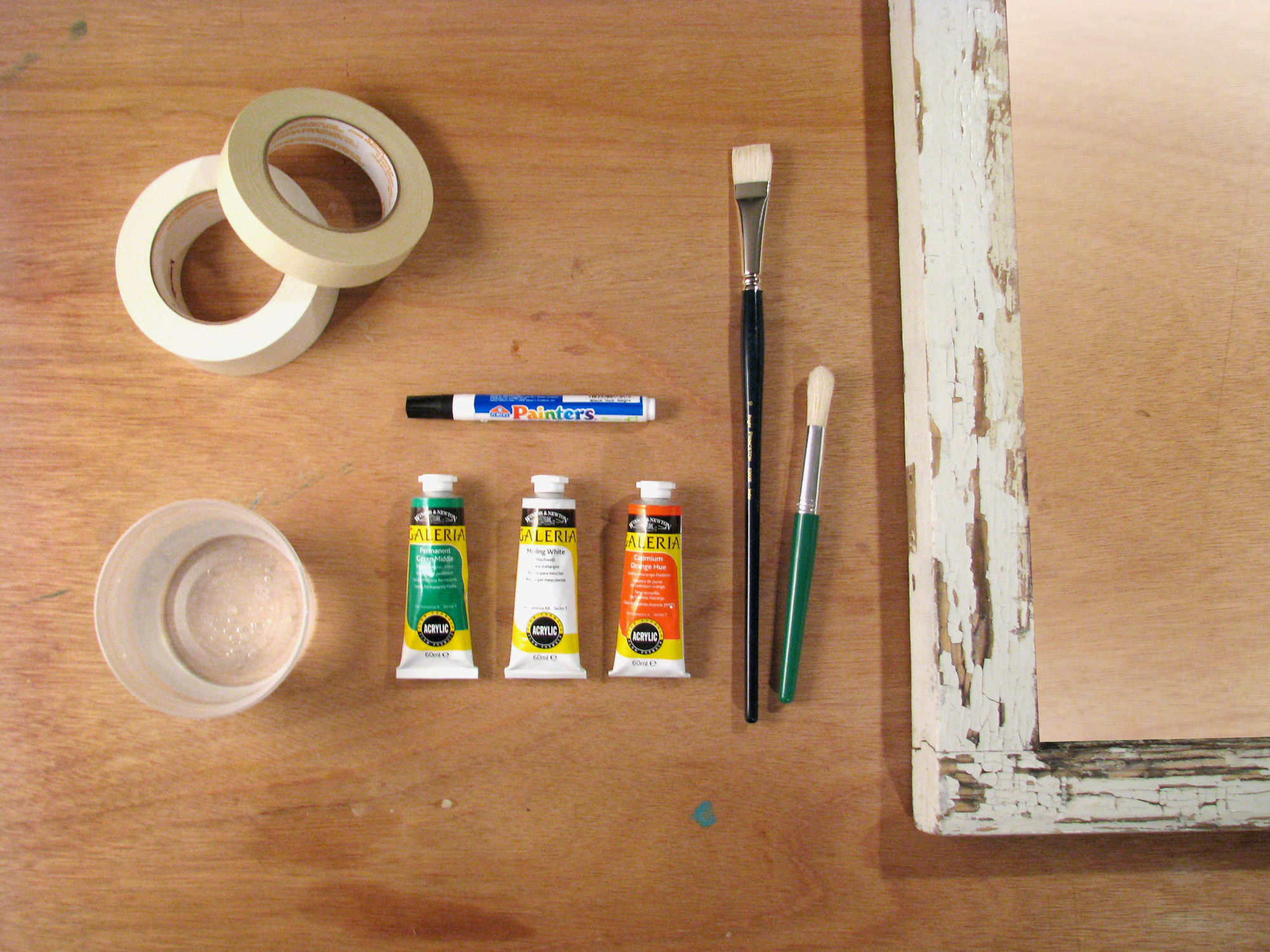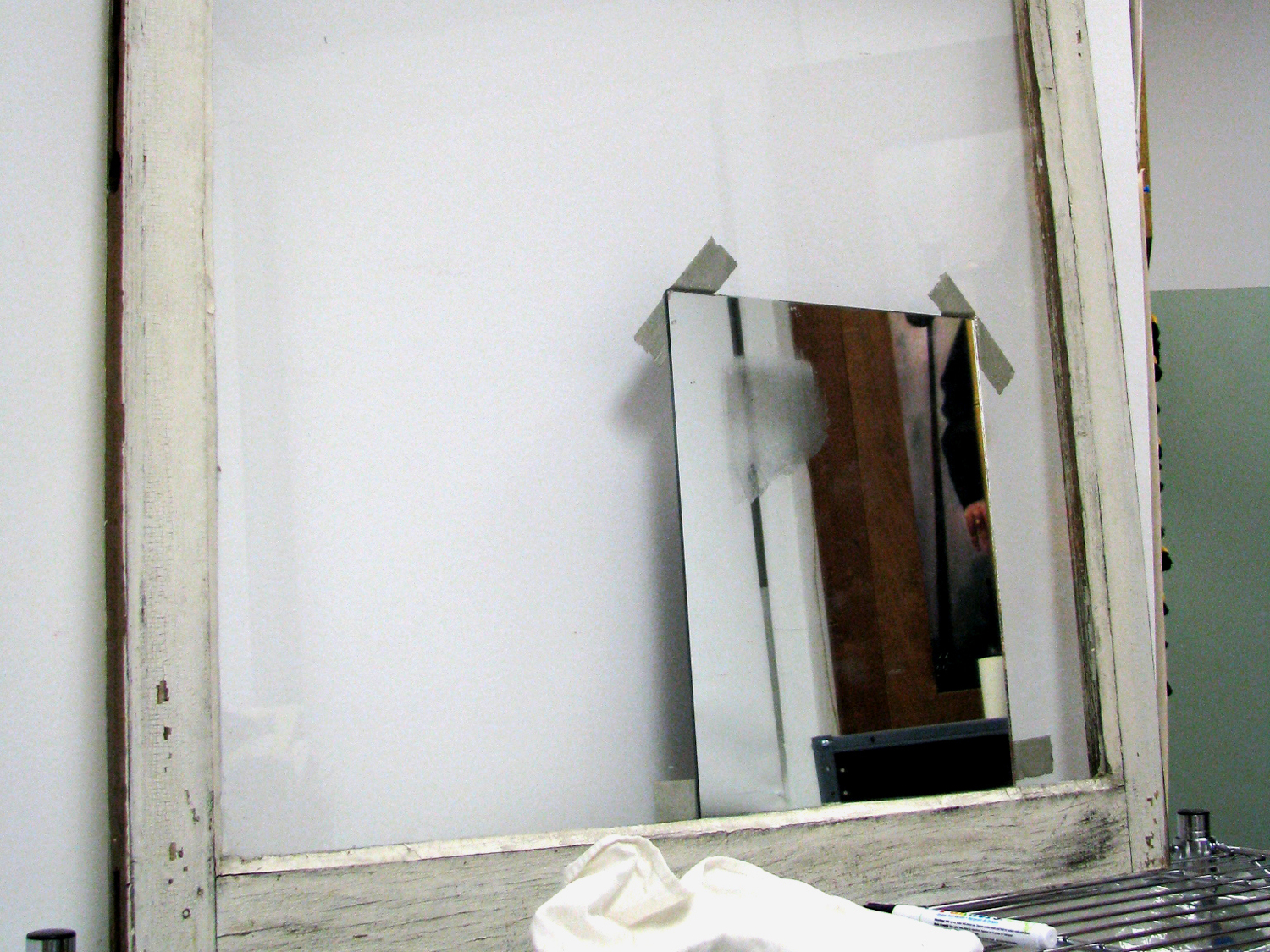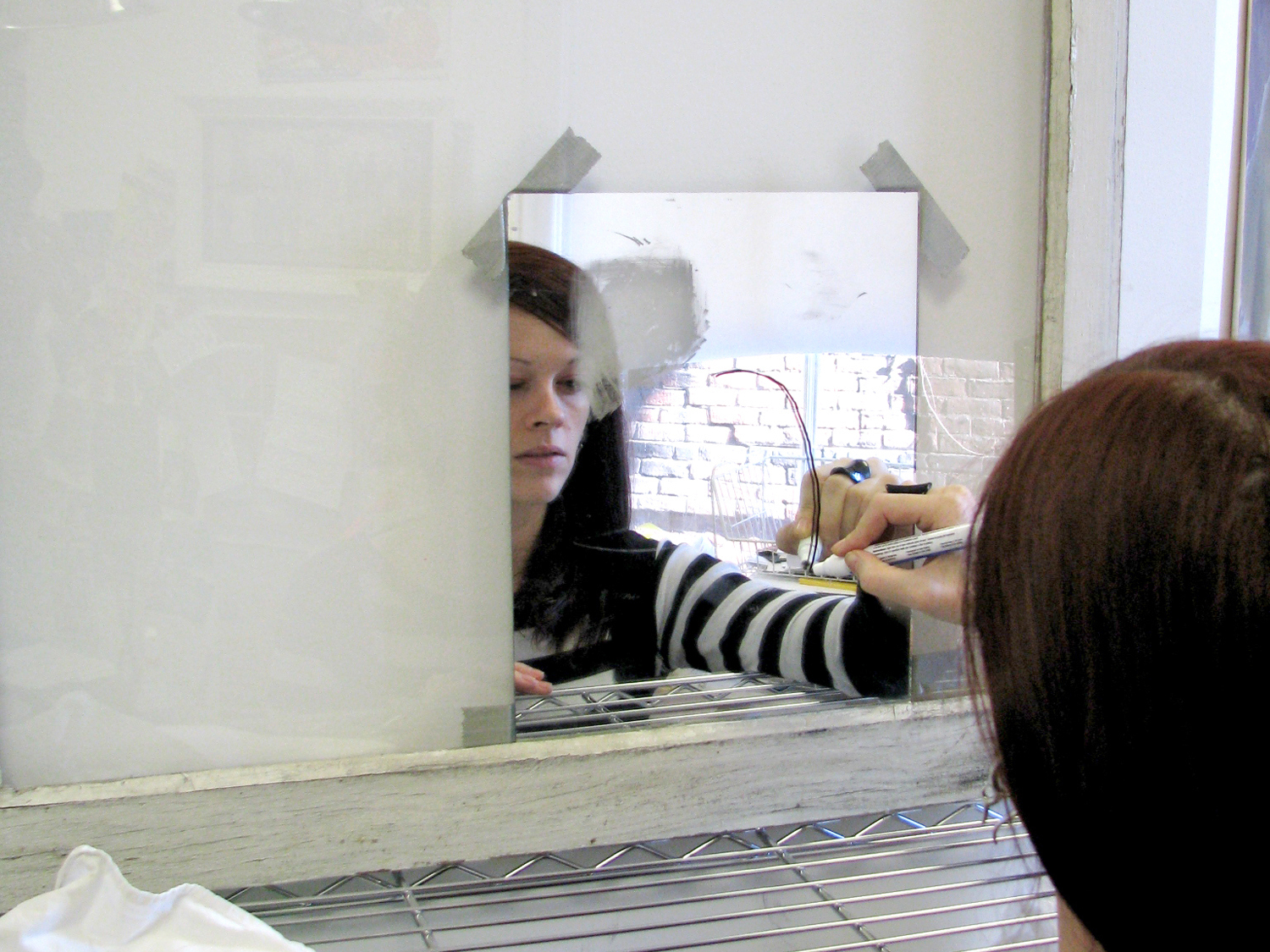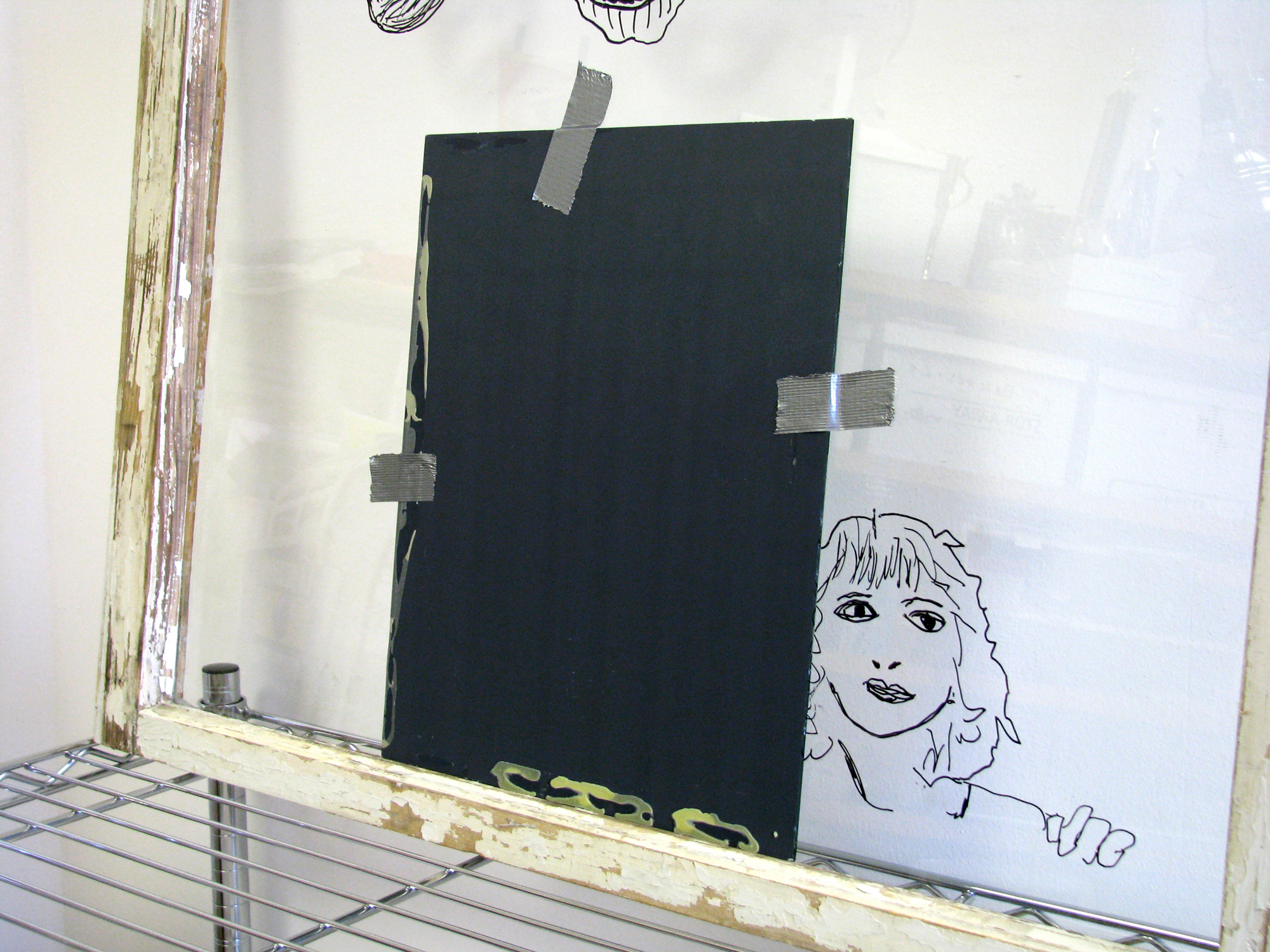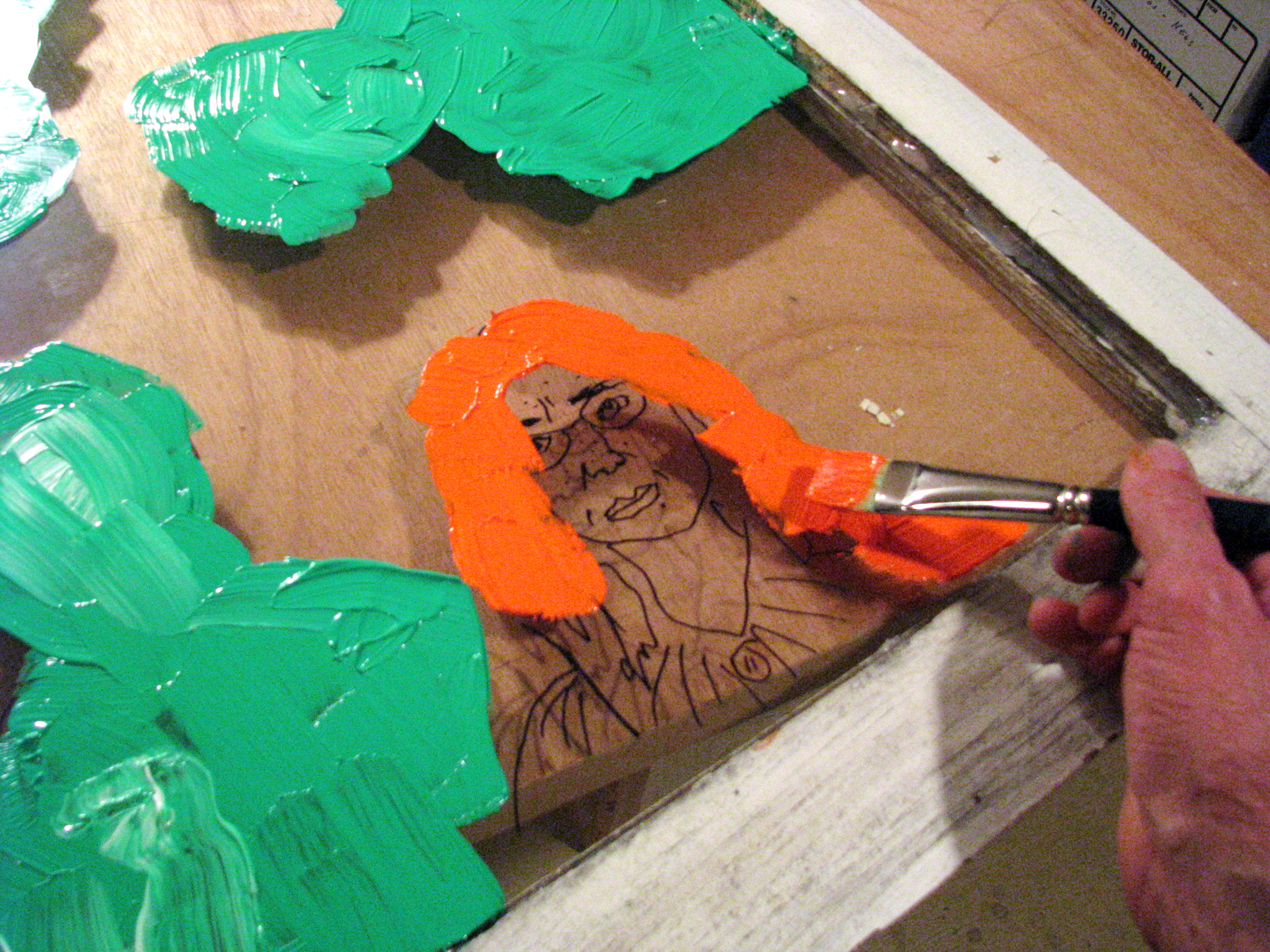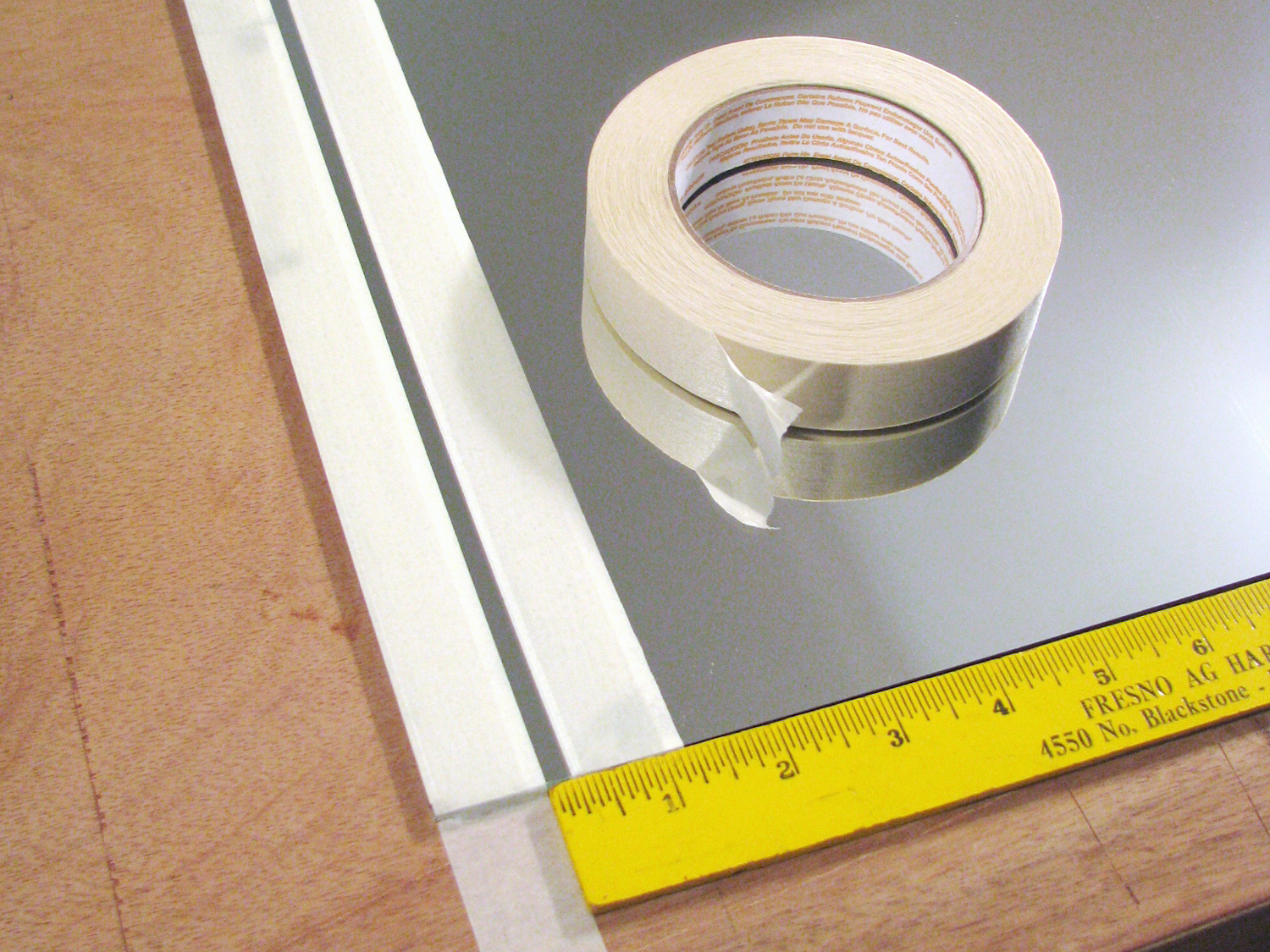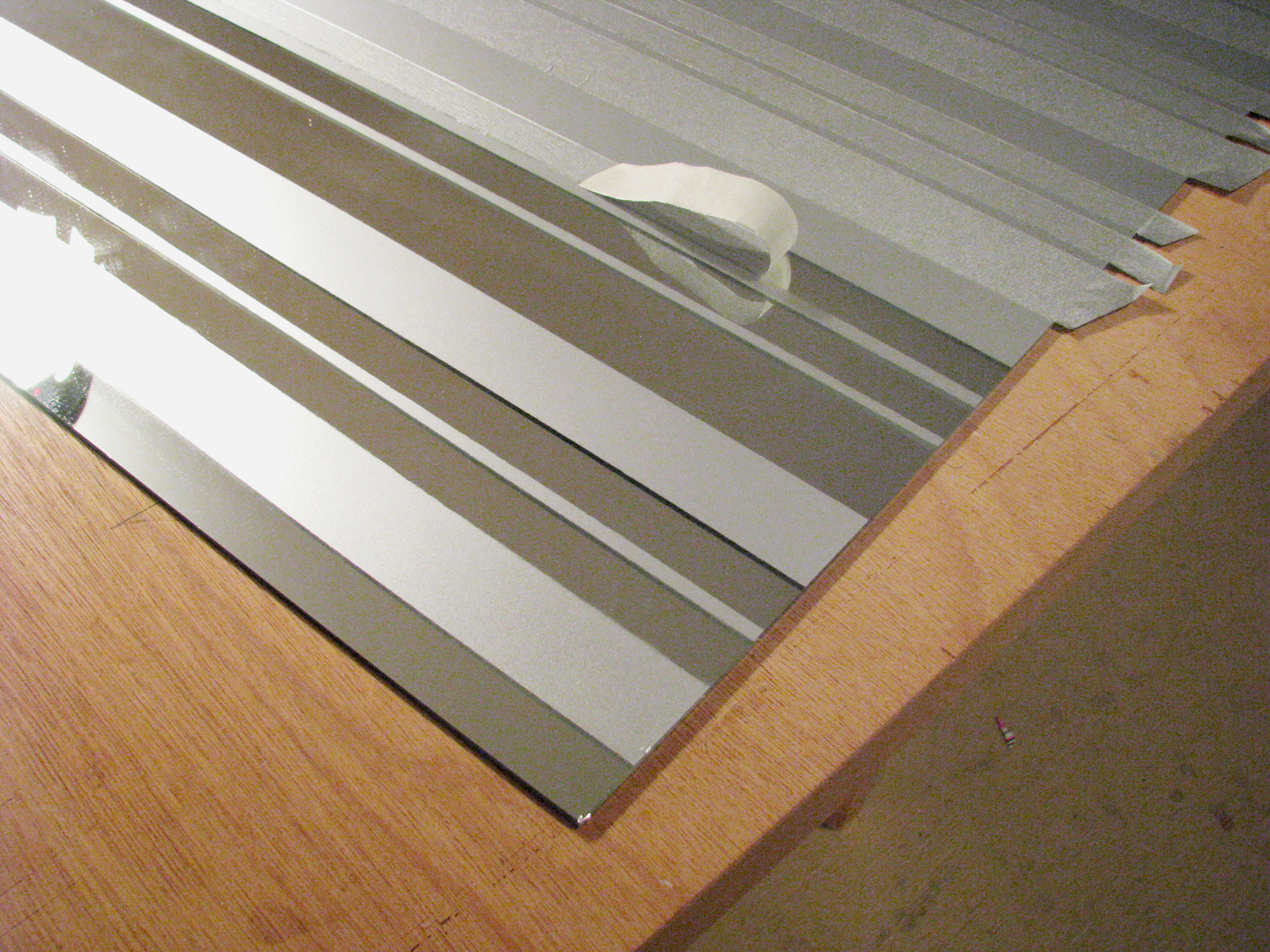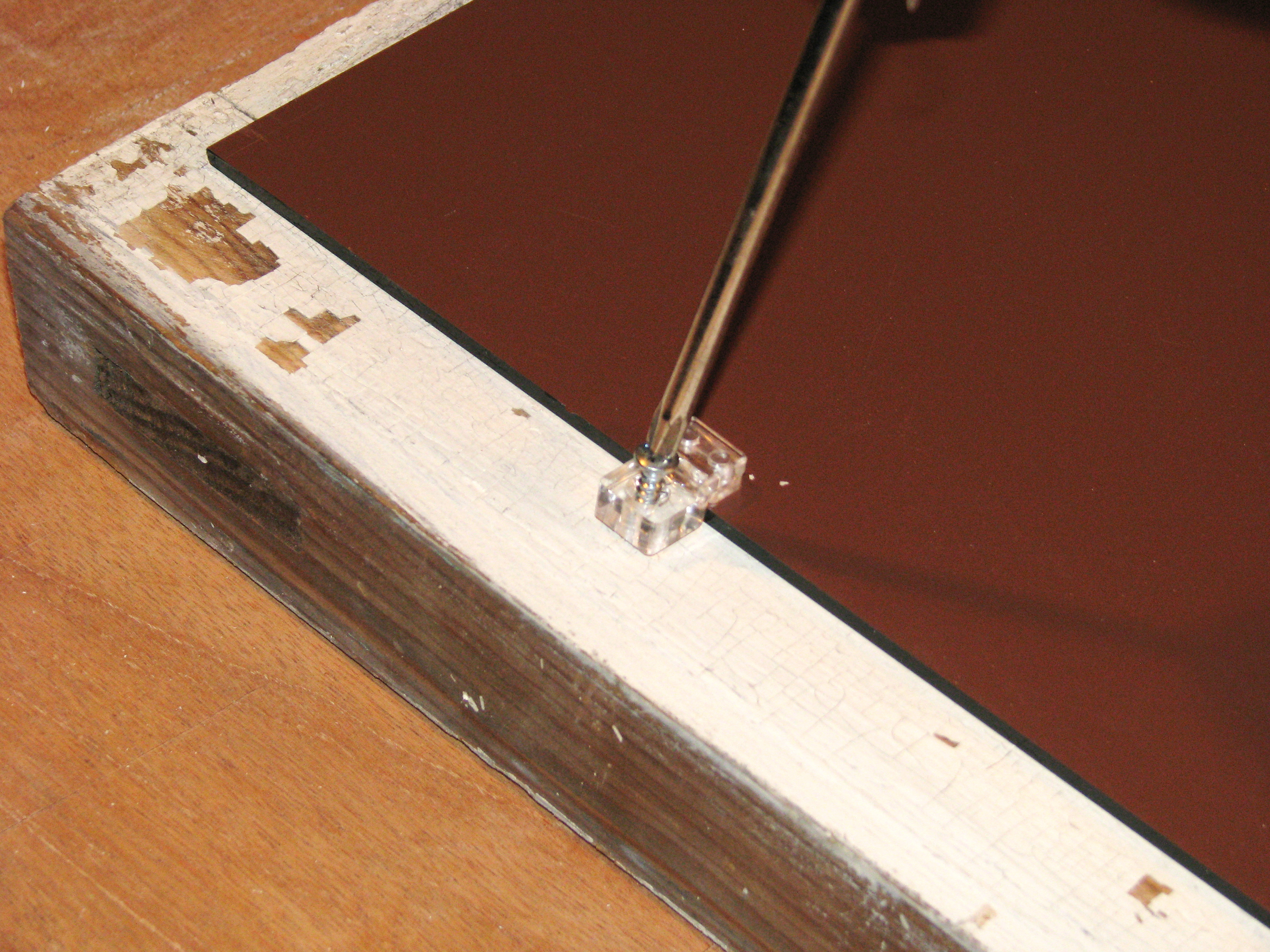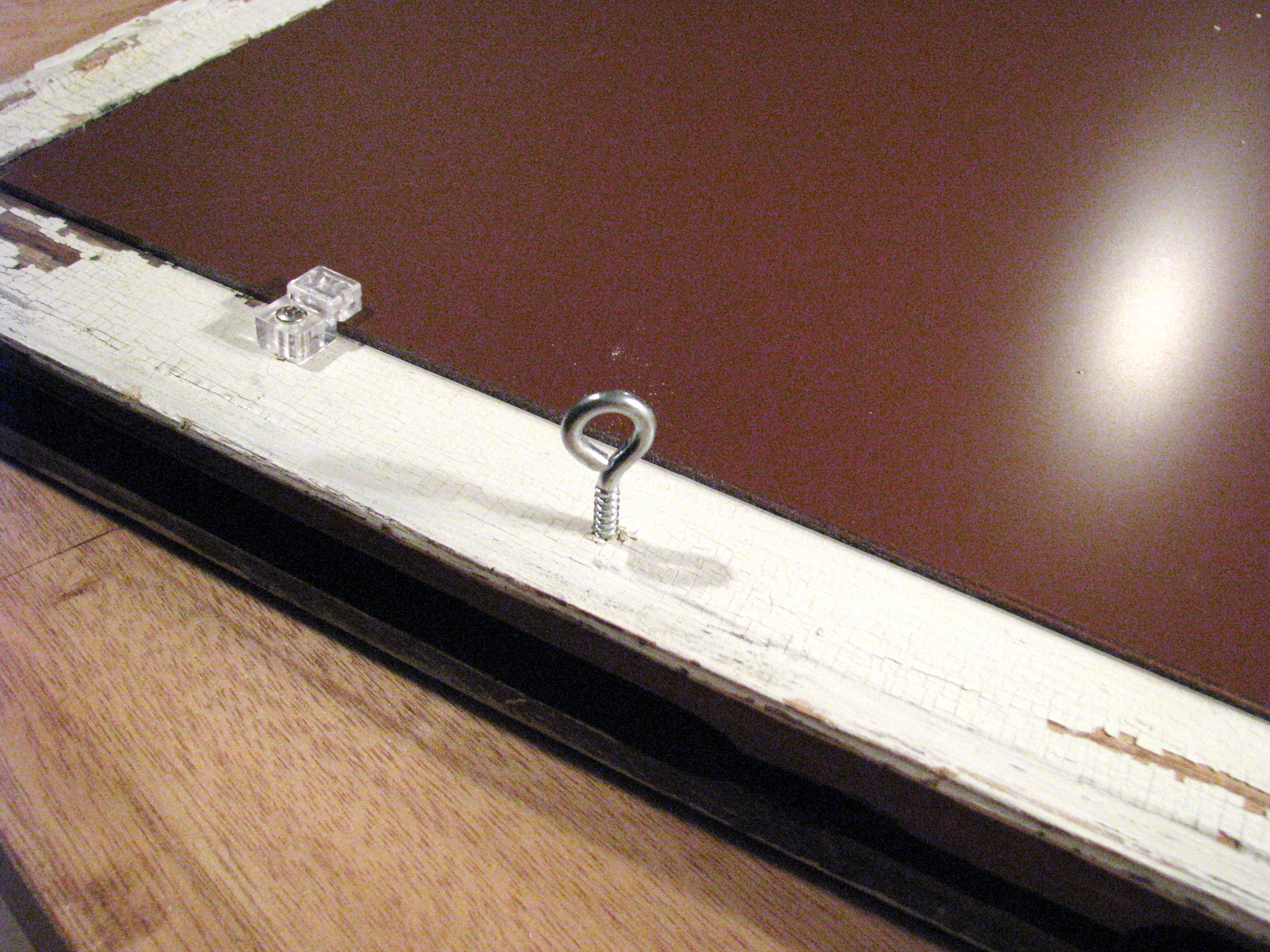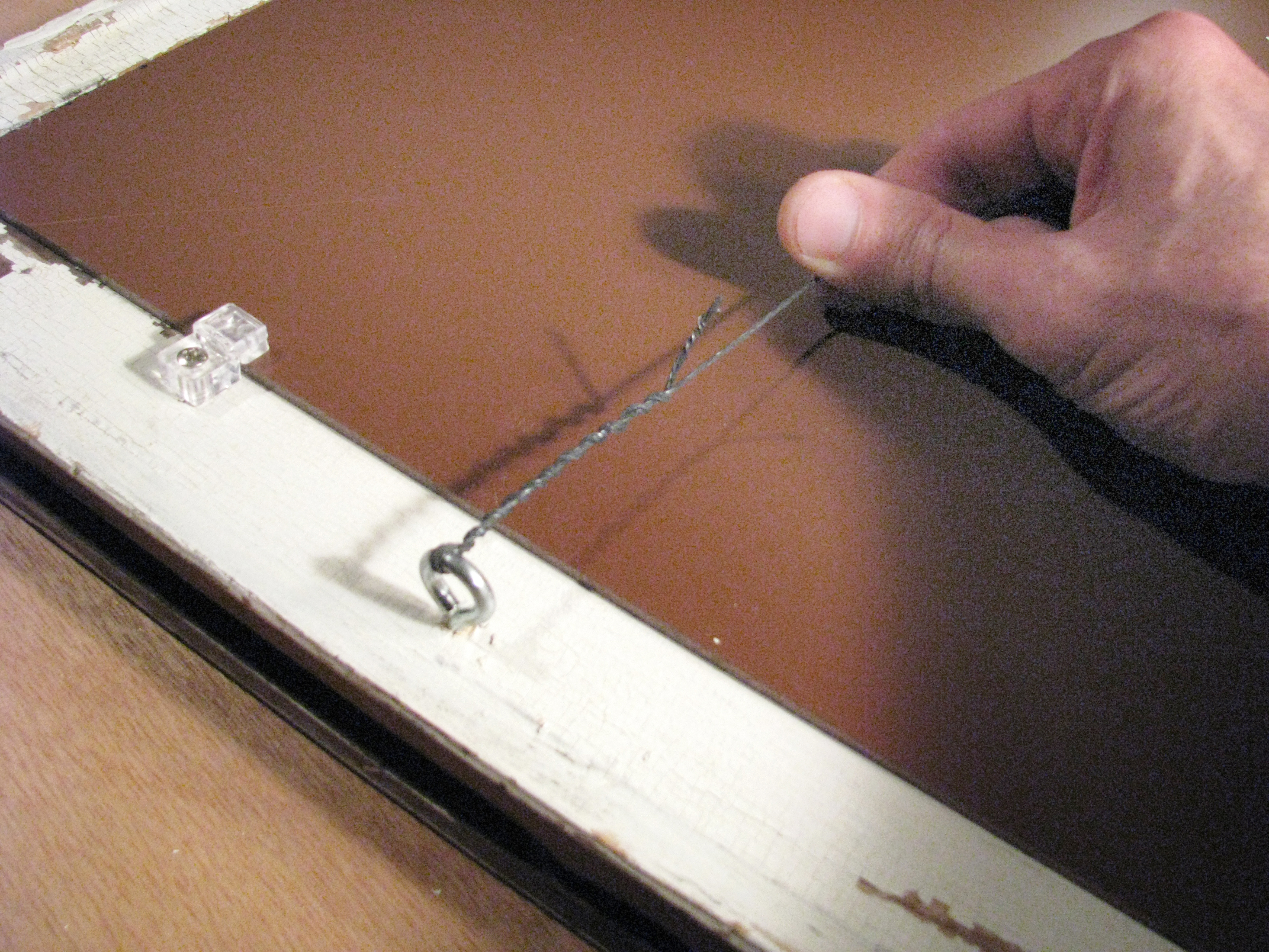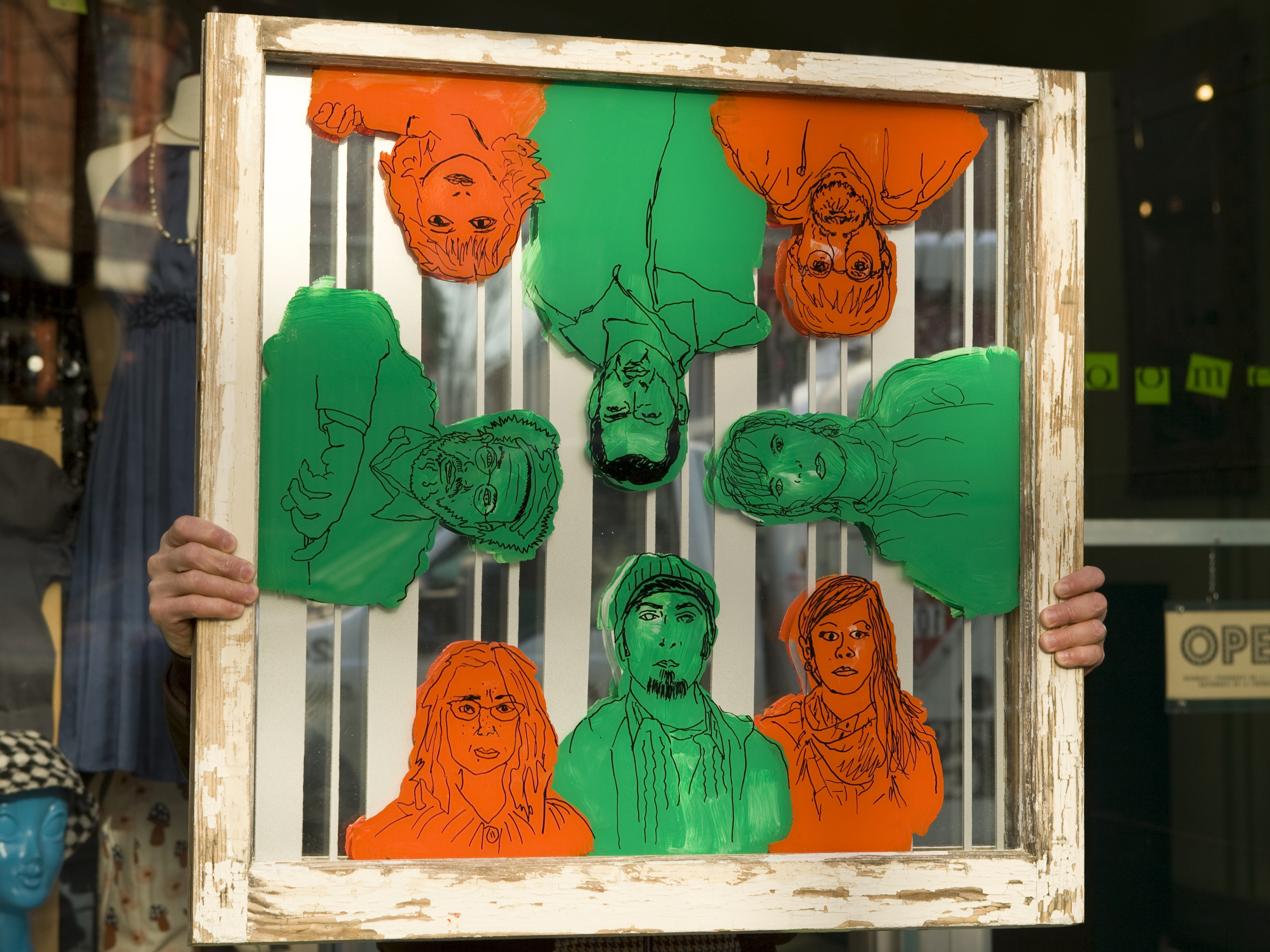Did you know that you can trace your reflection in a mirror? Test this process on your own first, using a Sharpie marker: if you stand just less than an arm’s length in front of a mirror and slightly squint one eye, you can draw a self-portrait by carefully tracing the lines of your own reflection right onto the glass. (The Sharpie ink will come clean with a little glass cleaner and a paper towel, no worries.)
The net result is a somewhat loose, simple, and yet remarkably identifiable likeness. The especially confounding thing is that you can stand as far from the mirror as your arm will allow, or as close as your eye will permit, and the actual size of the self-portrait never changes. Freaky! Keep in mind, when creating your composition, that the faces will all measure about 4½”×5½”, not including the shoulders and chest area.
Take the smaller of your 2 mirrors, and secure it with duct tape onto the front side of the window, with the reflective side of the mirror against the glass, in the approximate spot where you want the first portrait. Face the window flat against a wall, at a height that will allow for optimal framing of the reflection.
Recruit your first subject, and give him or her the following guidelines:
Most importantly, stand very still. Whichever eye you use to squint, stay consistent. (Switching eyes will throw the perspective off and make your face look like a Picasso.) Begin by following the line of your silhouette, so in case you do move or shift your body weight, you’ll have a frame of reference to which you can return.
Have your friend stand in front of the mirror and trace her reflection onto the back of the window glass, using the paint marker. Don’t touch the finished tracing, and allow it to dry completely for at least 1 hour.
Once the portrait has dried, remove the mirror and reposition it on the front of the window at the spot where you’d like to place the next portrait. Repeat with more portraits, until the back of the glass is filled to your liking.
